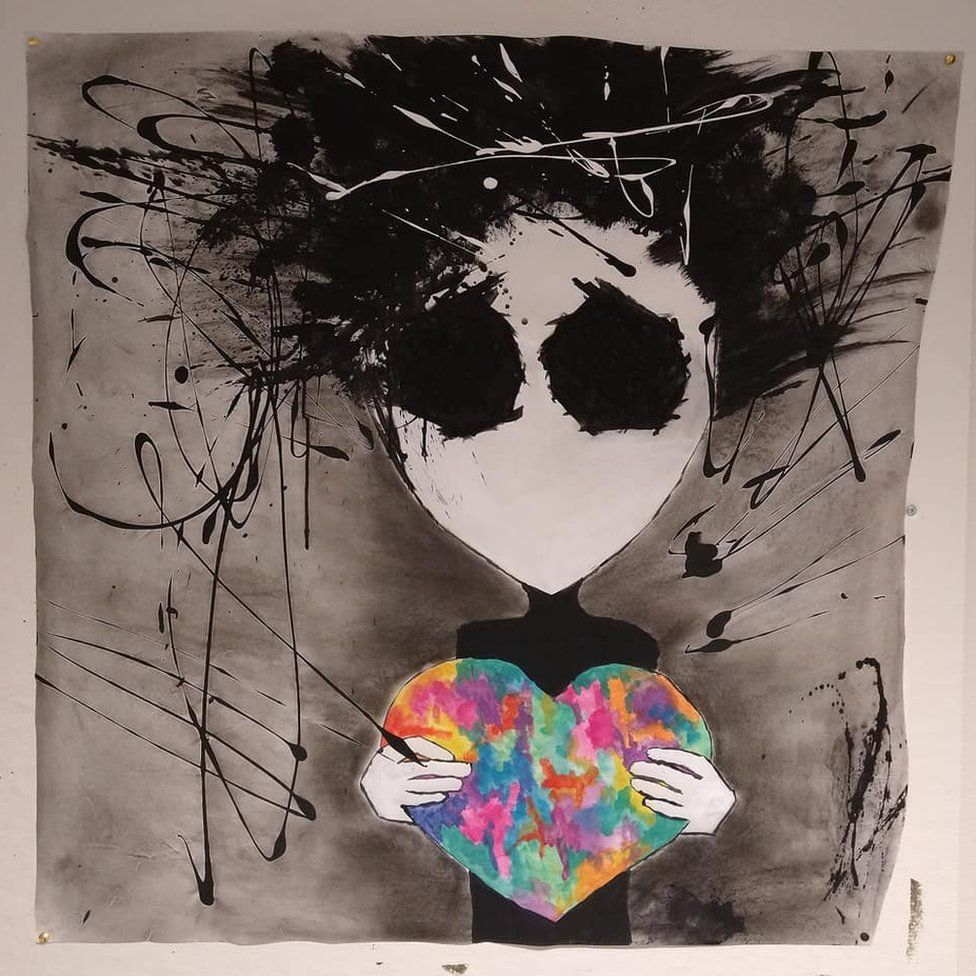
People may be given a diagnosis such as schizophrenia. Research indicates psychosis is associated with experiencing trauma, adverse life events, and stress. Psychosis is a term which describes experiences where an individual may have difficulties in determining what is real and what is not real. The next steps for this area of research will be further understanding the embodiment and feeling of hallucinations in different populations and developing interventions to support with this.” Example of participant annotations, used to create novel but simple multimodal unusual sensory experience (MUSE) body-maps. “The methods and outcomes of this study can contribute to advances on how we understand hallucinations and how we can support people who experience them. Participants often described that the method helped them share experiences that were difficult to put into words. “The range of feelings in the body and around the body (into peri-personal space) were particularly interesting. The article shares new insights through body-maps and data on the immediate feeling of hallucinations. MUSE maps involve documenting hallucinations in daily life and include body-mapping. “We designed a study and developed the novel but simple multimodal unusual sensory experience (MUSE) map method to investigate these features further. “During a systematic review of existing research, we found indicators of the contributions that multiple senses, emotions and feelings may make to hallucinations. Areas of concentration often held repeated sources of feelings like pain, heat, or tension.ĭr Katie Melvin, of the Department of Neuroscience, Psychology and Behaviour at the University of Leicester and corresponding author for the study, said: University of Leicester researchers also studied the emotions reported during hallucinations, with confusion, fear and frustration being the most common.Īlthough there was great variation in the localisation of feelings across participants, for each individual feelings were recurrently concentrated in particular body areas. The study, published in The Lancet’s EClinicalMedicine, provides the most extensive descriptive data to date on the feelings which arise during hallucinations and where individuals reported sensations in the body. Leicester psychologists have, for the first time, created body-maps of the sensations which arise during hallucinations in people experiencing psychosis. Kate Fenner: Instagram My Modern Met granted permission to use artwork by Kate Fenner.Summary: Researchers have created the first body map of sensations experienced during hallucinations in people experiencing psychosis. They represent the effect that depression takes on her self esteem. Flies are a common motif in Fenner's work. Her schizophrenia drawings provide a look into the disorder we don't often see-including her hallucination. To cope with it, she creates artwork about her hallucinations. The media lacks a portrayal of real people who have to live with it.” As a result, people suffering from these afflictions are afraid to open up about their experiences.įenner wants to break this cycle, “I understand the risks of being public about hallucinating bugs and voices, but I’m willing to take those risks in an attempt to normalize mental illness (by making it acceptable to talk about and inspiring people to seek help if they need it) and to educate people.” Kate Fenner was diagnosed with schizophrenia at 17. “While that may be the case for some, most people I know that suffer from some type of mental illness are normal people. “I personally feel like the media portrays any kind of mental illness in a way that makes people afflicted look incompetent, violent and lazy,” she told The Huffington Post UK.

But in doing so, Fenner hopes that it will help to lift the stigma around mental illness and the negative way in which the media portrays it. It’s not easy to so publicly tell the world about her problems. The creatures, coupled with text, illustrate the serious effects that depression has her on self esteem they are a symbol for how she feels “worthless like a fly.” Other drawings and paintings are direct representations of what she’s seeing at the time of her hallucinations, or what she’s hearing inside of her head. Flies are a regular fixture in Fenner’s work.


 0 kommentar(er)
0 kommentar(er)
